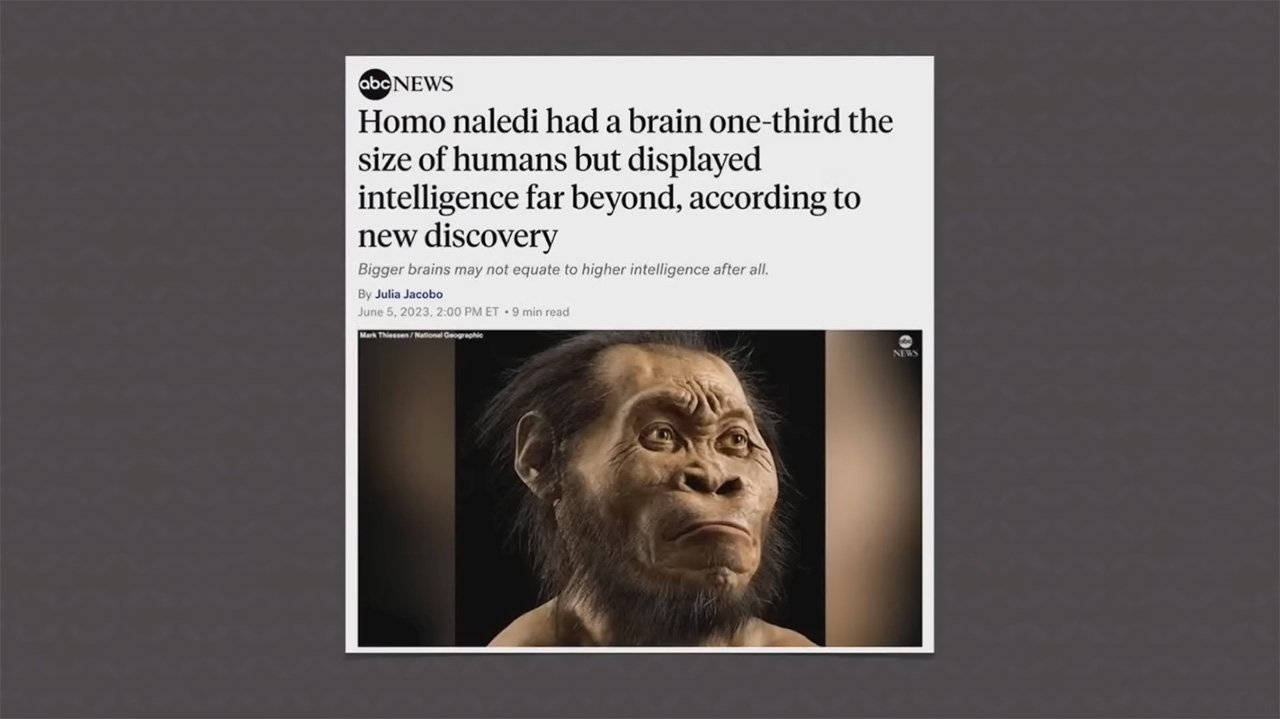
Did Homo Naledi Create Art and Start Fires?
In 2015, the news blew up with the announcement that scientists had discovered a new “human-like species” deep in a barely accessible cave in South Africa. This new species, believed to be another (of the supposed many over the years) “missing link,” was labeled Homo naledi, a new “homo” species. Well, Homo naledi is back in the news again, this time with scientists claiming these creatures created carvings and started fires in their cave.
As researchers further explored the cave wherein Homo naledi was found, they noticed “symbols” carved into the stone walls, including “triangles, squares and a sort-of ‘hashtag’ sign.”1 What could these rather vague symbols mean? Well, the scientists are claiming these carvings reveal something “striking” and “shocking,” something that “erases the idea of human exceptionalism.”2 The researchers believe these carvings were made by naledi to mark the graves of the dead:
“[Researchers] discovered that the species -- which lived about 335,000 to 236,000 years ago -- buried its dead and marked the graves. It is the first non-human species in history known to do so.”3
They say this has “proven and amplified” their “hunch” that Homo naledi buried its dead:
The researchers began to hypothesize that Homo naledi buried its dead during continued excavations in 2018 and in July 2022, those hunches were not only proven but amplified once Berger and his team found skeletal remains of Homo naledi and then carvings on the wall above them to mark those laid to rest there.4
They also argue that Homo naledi made fire. Now, burying your dead with rituals, carving meaningful symbols, and making and using fire are all human activities unique to those who bear the image of God. So, how should Christians think about Homo naledi within the framework of a biblical worldview?
First off, we must ask, “What was Homo naledi—human or ape?” If you look at the skeletal remains of Homo naledi, it’s clear that this creature was just a variety of ape. For example, in 2015, we wrote:
Homo naledi’s shoulder joints and curved finger bones are typical of tree-swinging apes. Its flared hips are typical of australopithecine apes. The lower ribcage widens just like the ribcage of australopithecine apes. And while Homo naledi reportedly has a “generally humanlike ankle and foot” in that the shapes of some of the foot bones could be consistent with an arched foot, this is described in the study as a lower arch with a different orientation than typical of the modern human foot . . .
Likewise, while Homo naledi’s thumb is a little longer than that of Australopithecus afarensis, the authors make no claim that it matches that of humans, indicating instead that it differs from all known hominins . . .
The tooth morphology does not match that of humans. Moreover, the mental foramen—an opening on its chinless jutting jawbone for a major nerve and blood vessel—is positioned and oriented in a way that differs substantially from that seen in archaic humans like Homo habilis and Homo erectus.
So, what do we make of this new find (which has not yet been published in the scientific literature)? Did an ape bury its dead with rituals, mark graves with carvings, and use fire?
Well, it all comes down to interpretation. These researchers—who already believe that Homo naledi was on the path to becoming more human-like—interpret these carvings, remains of fire, and more as being left behind by Homo naledi. But is there any other interpretation that matches the evidence?
Humans—the only beings known to bury their dead with rituals, carve meaningful symbols, and use fire—might have left behind all these “carvings” and burned-out fires.
Absolutely. Humans—the only beings known to bury their dead with rituals, carve meaningful symbols, and use fire—might have left behind all these “carvings” and burned-out fires. Now an evolutionist might argue, “But no evidence of humans was found in the cave!” Well, no evidence of humans was found in the cave . . . if you ignore the evidence of humans in the carvings and remains of fires!
It all comes down to your interpretation based on your starting point: man’s word or God’s Word?
Get More Answers on Answers News
This item was discussed this week on Answers News with cohosts Jessica Jaworski, Bodie Hodge, and Patricia Engler. Answers News is our weekly news program filmed live before a studio audience here at the Creation Museum and broadcast on our Answers in Genesis YouTube channel and posted to Answers TV. We also covered the following topics:
- Will carbon cuts make the earth warmer?
- Do cold temperatures cause evolution?
- Are signals from the Milky Way aliens saying hello?
- And more!
Watch the entire episode of Answers News for June 12, 2023.
Be sure to join us each Monday at 2 p.m. (ET) on YouTube or later that day on Answers TV for Answers News. You won’t want to miss this unique news program that gives science and culture news from a distinctly biblical and Christian perspective.
Thanks for stopping by and thanks for praying,
Ken
This item was written with the assistance of AiG’s research team.
Most Recent News
-
April 25, 2024 from Ken Ham Blog
A recent article made the bold claim that feathers are one of evolution’s greatest inventions. But what proof did they offer?
-
April 22, 2024 from Ken Ham Blog
Colorado law is all too happy to let medical staff prescribe the “abortion pill” (RU-486) to their patients, but it’s not so willing to allow for reversal.
Footnotes
- Jacobo, Julia. “Homo naledi had a brain one-third the size of humans but displayed intelligence far beyond, according to new discovery.” ABC News, June 5, 2023. https://abcnews.go.com/amp/US/homo-naledi-brain-size-humans-displayed-intelligence-new/story?id=99838407.
- Jacobo, “Homo naledi.”
- Jacobo, “Homo naledi.”
- Jacobo, “Homo naledi.”

Answers in Genesis is an apologetics ministry, dedicated to helping Christians defend their faith and proclaim the good news of Jesus Christ.
- Customer Service 800.778.3390
- © 2024 Answers in Genesis



